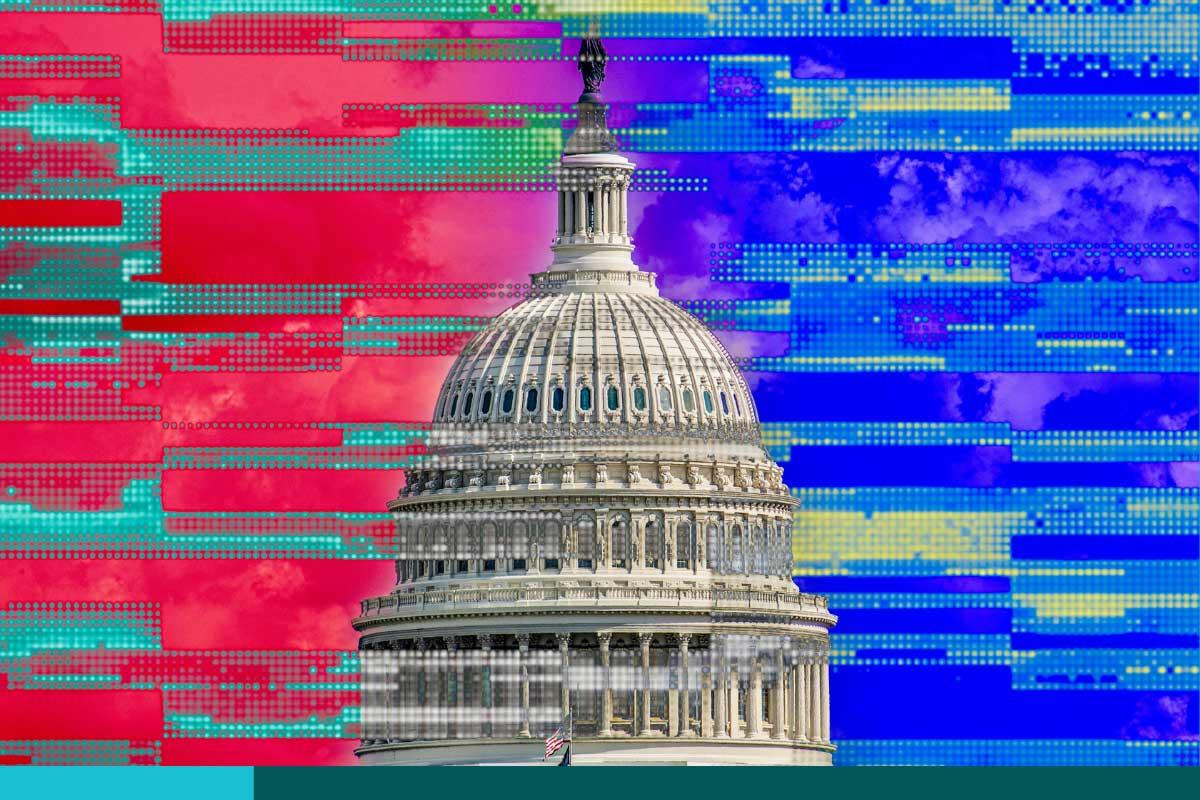Navigating the 2024 Election Security Landscape: Challenges and Opportunities

The 2024 United States presidential election is rapidly approaching, and state and local governments are focusing their efforts on bolstering election security and ensuring the proper safeguards are in place.
The Biden Administration has made it apparent that cybersecurity is and will continue to be a top priority nationwide, as security threats continue to increase in frequency and severity. Since the start of the Covid-19 pandemic in 2020, instilling public trust in government has also remained a constant theme for state and local governments; and as districts work to modernize election systems, this has become even more challenging.
Threats to election security range from dis- or misinformation, the creation and deployment of deepfakes, phishing attacks against elections administrators, targeted social media campaigns that can sway voting decisions, covert operations attempting to harm political organizations or offices, ransomware, and distributed denial-of-service (DDoS) attacks.
Election security includes a wide array of systems, tools, and networks, including but not limited to: voting systems and infrastructure, polling locations and associated infrastructure and systems, IT systems and software used to manage elections such as voting reporting systems, and secure storage facilities. It also includes the protection of agencies and stakeholders involved in the election process, such as state and local government agencies, federal partners, and the vendor community.
Furthermore, with the advent and advancement of emerging technologies such as generative artificial intelligence (AI), states and localities are facing additional security challenges. For instance, in January of this year, the state of New Hampshire dealt with a series of robocalls backed by artificial intelligence mimicking President Joe Biden’s voice and discouraging people from voting in New Hampshire’s primary. Fulton County, Georgia was also affected by a cyberattack, leaving its voting systems inaccessible as a precaution.
Directives
To offset these threats, the AI Elections accord, unveiled at the Munich Security Conference in February and signed by twenty top technology companies, details ways to make it harder for malicious actors to use AI tools to disrupt election security.
In 2016, the Cybersecurity and Infrastructure Security Agency (CISA) was created after the Russian interference in the 2016 Presidential Election. Shortly thereafter, in 2017, the Department of Homeland Security designated election infrastructure as a critical infrastructure subsector, reinforcing the nationwide call to action to make cybersecurity a top priority that would continue well into the future.
In February 2024, CISA announced the launch of a new program designed to enhance election security for states, afford additional support to localities and safeguard this year’s presidential election.
CISA has also developed the following guidelines and best practices around election security that state and local governments should follow to maximize cybersecurity preparedness and help districts strengthen enterprise networks and enhance election infrastructure:
- The implementation of an enterprise-wide software and patch management program can minimize the possibility of a severe security breach by providing organizations with better insights into the software being utilized by its networks and potential vulnerabilities, such as the presence of commodity malware. Automatic updates are another, less costly suggestion that should be employed should an organization omit the use of a patch management program.
- Centralized log management can help state and local governments assess the effects of potential security impacts and incidents. This is where security information and event management (SIEM) solutions come into play, allowing logs to travel from local hosts to centralized log management servers while reducing the chance of log deletion by bad actors.
- Proper network segmentation is a critical component of reducing security impacts should a bad actor gain control of a network. With network segmentation in place, security breaches can be contained, minimizing overall impacts to the network.
- Blocking suspicious activity involves enabling applicable security features baked into appliances, services and software, appropriately scanning emails, training current employees to identify and deal with phishing attempts, and blocking macros from running in the enterprise.
- To prevent unauthorized access to election infrastructure and assets, credential management, strong password management, and multi-factor authentication (MFA) are imperative. MFA can be a valuable tool for voter registration and election night reporting, for example.
Opportunity
Technology companies will be well-positioned if they offer solutions that can safeguard voting databases that contain critical and sensitive personal data and protect this data across the entire attack surface, secure and strengthen access to applications and systems, provide threat intelligence in real-time, and enhance overall security operations. Added features to software and other tools such as vulnerability scanning and reporting and analytics will be a top selling point.
State and local government customers will be looking for modern solutions that can streamline the voting process and make it more secure. These include electronic poll books which can eliminate the need for paper ballots, tabulation devices at voting sites, modern voting machines, and routers at election sites that have built-in security features, including unified threat management and web content filtering.
State and local governments should also take care to ensure they have the appropriate IT security policies and incident response plans in place organization-wide. These can include delineated roles and responsibilities, incident severity thresholds, approved software lists, policies around password management and patch management, and specific protocol should a security event take place.
Funding
Under the Help America Vote Act (HAVA), formula-based (non-competitive) election security grants are appropriated as part of the Election Security grant program. Since the 2016 election, Congress has sent a total of $995 million to states for election security and administration.
Election security funds help states enhance the administration of elections for the federal office, such as adopting technologies that bolster overall election security, upgrade voting systems, maintaining voter registration databases, providing provisional voting options, training election officials and poll workers, and bolstering election administration infrastructure. The state of Maine, for example, used HAVA funding to replace the state’s centralized voter registration system, boosting overall security and modernization system-wide.
The downside to this funding is that it can be a bit sporadic and is not guaranteed under each year’s Consolidated Appropriations Act. Therefore, states and localities cannot rely solely on this funding during their annual budgeting process. Given the myriad of security challenges state and local governments are faced with, many organizations are often left underfunded.
Congress has not yet allocated federal election security dollars for 2024.
Solutions for 2024
Identifying security solutions that combat threats to the voting system and protect voters and the election community is a multipronged approach that will require an all-hands-on-deck strategy. In 2024, as you look to work with your state and local government customers in efforts to shore up their elections' security posture, remember to position your tools and solutions as reliable and robust, easy to deploy at various polling locations, inclusive to remote management, interoperable, cost-effective, and designed with baked-in security features.
To get more TD SYNNEX Public Sector Market Insight content, please visit our Market Intelligence microsite.
About the Author:
Yvonne Maffia is a senior analyst within TD SYNNEX Public Sector’s Market Intelligence organization, covering state, local and education markets. She applies insights and analysis to purchasing trends to help vendors and partners shorten their sales cycles.
























